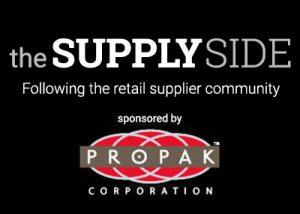The Supply Side: Advice on the make-it or break-it time for retailers, suppliers
by November 21, 2017 4:22 pm 444 views

The approaching holiday season can be a make-it or break-it time for retailers and their suppliers. Fayetteville-based retail data collection firm Field Agent recently released a report outlining potential pitfalls for brand managers that can occur during the busy fourth quarter.
“With Q4 upon us, this guide will share some of the more common causes of suboptimal — you might say, underachieving — retail execution among CPG companies,” Field Agent CEO Rick West noted in the report. “Make the most of the all-important weeks ahead, by being mindful of the following in-store pitfalls.”
• Your products aren’t on store shelves.
“You can’t win if you don’t first show up,” the report noted. “And in the fiercely competitive contest for shoppers’ dollars, some products are, well, no-shows.”
West said maybe a product never arrived in-store, or perhaps it’s collecting dust in the backroom. Either way it’s out-of-stock and not available to shoppers. He said retailers lose a staggering $93 billion annually because of out-of-stocks, according to RIS News.
Field Agent’s own research indicated out-of-stocks are among shoppers’ biggest complaints. In a survey of 523 parents, 40% cited out-of-stocks as a “particularly frustrating” factor in shopping for toys, the third most common frustration in the entire survey.
• Products are not where they are supposed to be.
The report said sometimes products are available, but they are misplaced in the store. The product that’s supposed to be on the main aisle is actually languishing on aisle 17, where, tragically, fewer shoppers will see it.
For brands, so much of retail success hinges on being in the right place at the right time. The sale depends entirely on the shopper’s ability to see the merchandise and in-store placement is particularly critical. Brand managers should regularly monitor the location of their products in stores, particularly before and during major retail events.
• Shoppers can’t see your products.
The stakes are higher in the fourth quarter, and perhaps products are in stock but not displayed in the correct place. Field Agent said shoppers don’t notice them due to their misplacement on store shelves. West said products lower on the shelf can be harder to see and reach. He said shelf placement can be a rich source of competitive advantage or disadvantage for suppliers.

• Your in-store marketing isn’t being properly executed.
From product displays to coupon dispensers, in-store signage to interactive demos, brands will spend billions of dollars promoting their products throughout the holiday selling season. In-store marketing can make all the difference with purchase-minded shoppers, West said in the report.
The problem is when point-of-purchase marketing is not properly executed inside stores. Consider product displays, for example, which could be failing to convert shoppers for any one of a number of reasons: The point-of-sale materials and product never arrived at the store; The display never made it to the store floor (it’s in the backroom); The display is a casualty of inaccurate information, perhaps owing to human error and/or the retailer’s inventory management system; The display is on the floor but in the wrong place; or The display is on the floor but stocked with the wrong product.
Brand managers should take every stride to ensure their displays, signage and other forms of in-store marketing are actually making money…not just spending it, the report said. Wal-Mart Stores said it will have 165,000 product demonstration and sampling opportunities for shoppers in its stores this holiday season.
• Shoppers are seeing the wrong prices.
Shoppers can be remarkably price sensitive, something brands well know, the report said. Seemingly small pricing mistakes can cost a brand sales now because the shopper doesn’t want to spend that amount today, and in the future as the shopper has the wrong idea about the price of the product.
Field Agent said products could be incorrectly priced in stores due to: Basic human error, like simple mistakes or accidental oversights; Pressures and realities at the store level, which might cause local store managers to price products in unexpected ways; or Inaccurate information, for instance, disagreement between the retailer’s information system and pricing on the floor.
• Rival brands have a better in-store strategy and execution.
Field Agent said take control of the brand’s execution in stores. Keep in mind the retail landscape is full of limitations: shelf space is limited; floor space is limited; shoppers’ attention is limited. Most importantly, shopper spending is limited. These limitations naturally create a hyper-competitive environment, the report said.
If rival brands have a better in-store strategy and/or execution, then your brand may be undercutting its potential. Successful brand managers take steps to understand the competitive landscape inside stores. This is particularly true before and during the competitive fourth quarter.
West warns that if products aren’t selling, maybe it’s because a competitor’s products are.
Field Agent said retail success begins with a solid strategy, but it’s only as good as the execution. West reminds suppliers they will be judged on the sales they make and those they don’t. He said Field Agent routinely helps suppliers keep tabs on in-store execution issues with mobile audits conducted by its nationwide team of Field Agents that help to bridge the visibility gap between headquarters and stores everywhere.
––––––––––––––––––––
Editor’s note: The Supply Side section of Talk Business & Politics focuses on the companies, organizations, issues and individuals engaged in providing products and services to retailers. The Supply Side is managed by Talk Business & Politics and sponsored by Propak Logistics.
